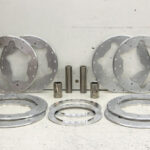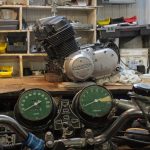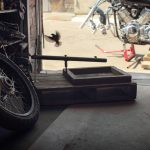And here is a post about Kawasaki KZ650 valve timing adjustment.
The procedure of camshaft installation and valve timing itself is clearly described in the Factory Service Manual and there is nothing that I could add to it. So I did it all by the book.
I got a result which aroused some doubts in me. From one side, the position of camshafts’ lobes, camshafts’ end notches and timing chain pins looked to be positioned perfectly.
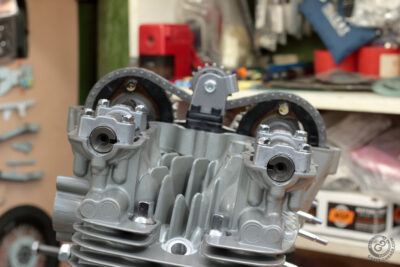
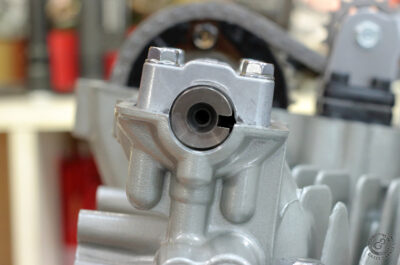
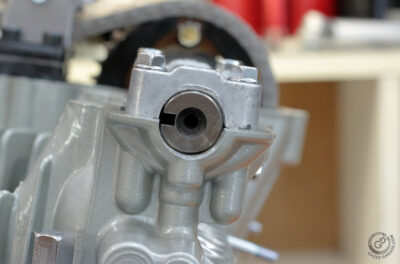 From another side, timing markings were positioned slightly askew.
From another side, timing markings were positioned slightly askew.
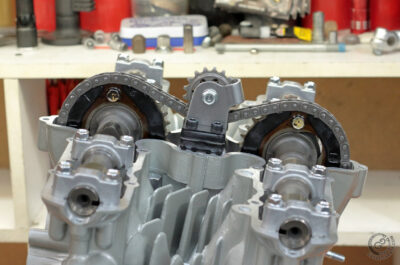
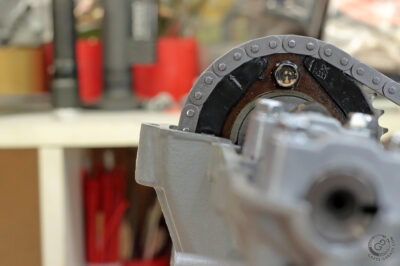
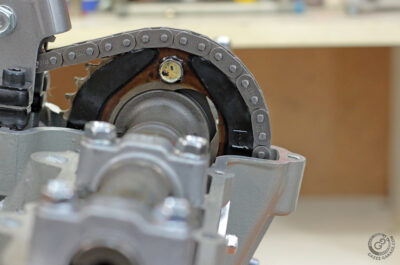 I am working with timing marks stamped not on metal, but on rubber parts of the camshaft sprocket for the first time. My initial thought was that such imperfect marks fitment is a result of imperfect positioning of rubber part on metal part or distortion of rubber cast on metal that might of happen more than 40 years ago. However, since I used Kawasaki KZ750 cylinder head and Zephyr 750 camshafts, I was bound to check matter through and out.
I am working with timing marks stamped not on metal, but on rubber parts of the camshaft sprocket for the first time. My initial thought was that such imperfect marks fitment is a result of imperfect positioning of rubber part on metal part or distortion of rubber cast on metal that might of happen more than 40 years ago. However, since I used Kawasaki KZ750 cylinder head and Zephyr 750 camshafts, I was bound to check matter through and out.
Surely, I checked the simplest things first: I installed the KZ650 ignition rotor instead of Zephyr 750: the marks on both rotors were positioned perfectly identically.
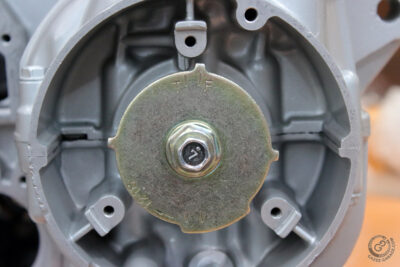
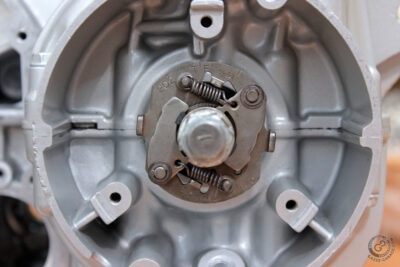 Then I checked information on valve timing in all available books on KZ650, KZ750, Zephyr 750 and ZR7. It turned out that KZ750, Zephyr 750 and ZR7 have identical valve timing specs. Here are screenshots of timing tables from Kawasaki Factory Service Manuals:
Then I checked information on valve timing in all available books on KZ650, KZ750, Zephyr 750 and ZR7. It turned out that KZ750, Zephyr 750 and ZR7 have identical valve timing specs. Here are screenshots of timing tables from Kawasaki Factory Service Manuals:
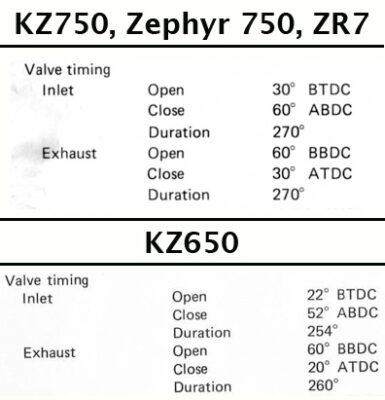 In case if reader is not familiar with specific abbreviations:
In case if reader is not familiar with specific abbreviations:
BTDC – Before Top Dead Center
ABDC – After Bottom Dead Center
BBDC – Before Bottom Dead Center
ATDC – After Top Dead Center
The key point is the moments of opening of the inlet valve and closing of the exhaust valve. As you may see they are completely symmetrical 30° BTDC and 30° ATDC for 750 camshafts or mostly symmetrical 20° BTDC and 22° ATDC for early 650 camshafts.
All I had to do was to check the information from the book. I made the drawing and printed a 360 degree dial that I could mount to the crankcase where the ignition contacts (picker) plate is mounted. The zero of the dial I perfectly aligned with the timing mark on crankcases.
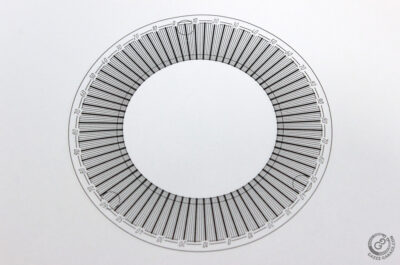
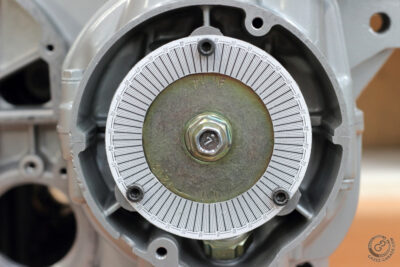 Then I checked that the valve clearance for both the intake and exhaust valves of the fourth cylinder is the same and mounted two dial gauges so they indicate movement of valve tappets.
Then I checked that the valve clearance for both the intake and exhaust valves of the fourth cylinder is the same and mounted two dial gauges so they indicate movement of valve tappets.
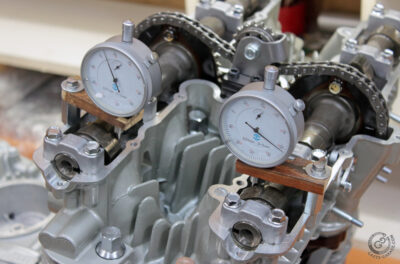
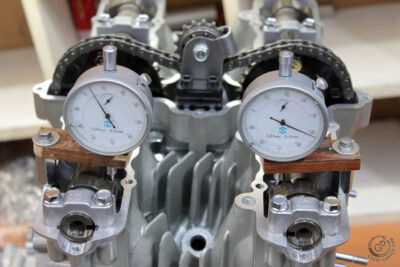
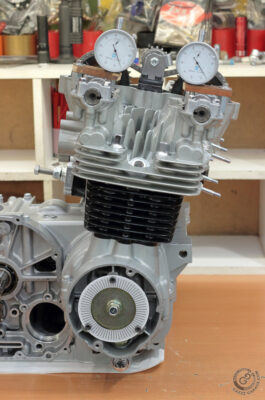
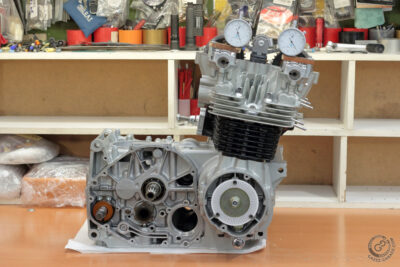 With this setup I received results that were not exact as those indicated in books, but pretty corresponding. However, this made me confident that I adjusted valve timing correctly.
With this setup I received results that were not exact as those indicated in books, but pretty corresponding. However, this made me confident that I adjusted valve timing correctly.
Inlet
Open: 40° BTDC
Close: 70° ABDC
Exhaust
Open: 80° BBDC
Close: 40° ATDC
As you may see, values are different from those indicated in the books. The reason for such difference is a fact that Kawasaki does not state lift of valve at which measurements have to be taken. But the picture of overlapping phase of intake and exhaust valves is clearly symmetrical. For me this means that timing is set correctly and non-perfectly aligned timing markings is the result of one of two reasons I mentioned before (inaccuracy of placing marks or rubber parts distortion).
One may note that all numbers I get in result of measurements are for 10° more than those in books. All except one: closing of exhaust valve. Such evenness of three measurements support that timing is set correctly. As for the moment of exhaust valve closing, it turned out that it opens for around 10° earlier than has to according to books. So the actual picture of valve timing is more similar to that of KZ650 but with wider phases of valves opening and closing. Why it is not indicated in the Zephyr 750 book I couldn’t guess, however since “early” opening of the exhaust valves is for good (resulting in cooler exhaust gases), it suits me.
Later on, with oil in the engine I’ll repeat measurements.




